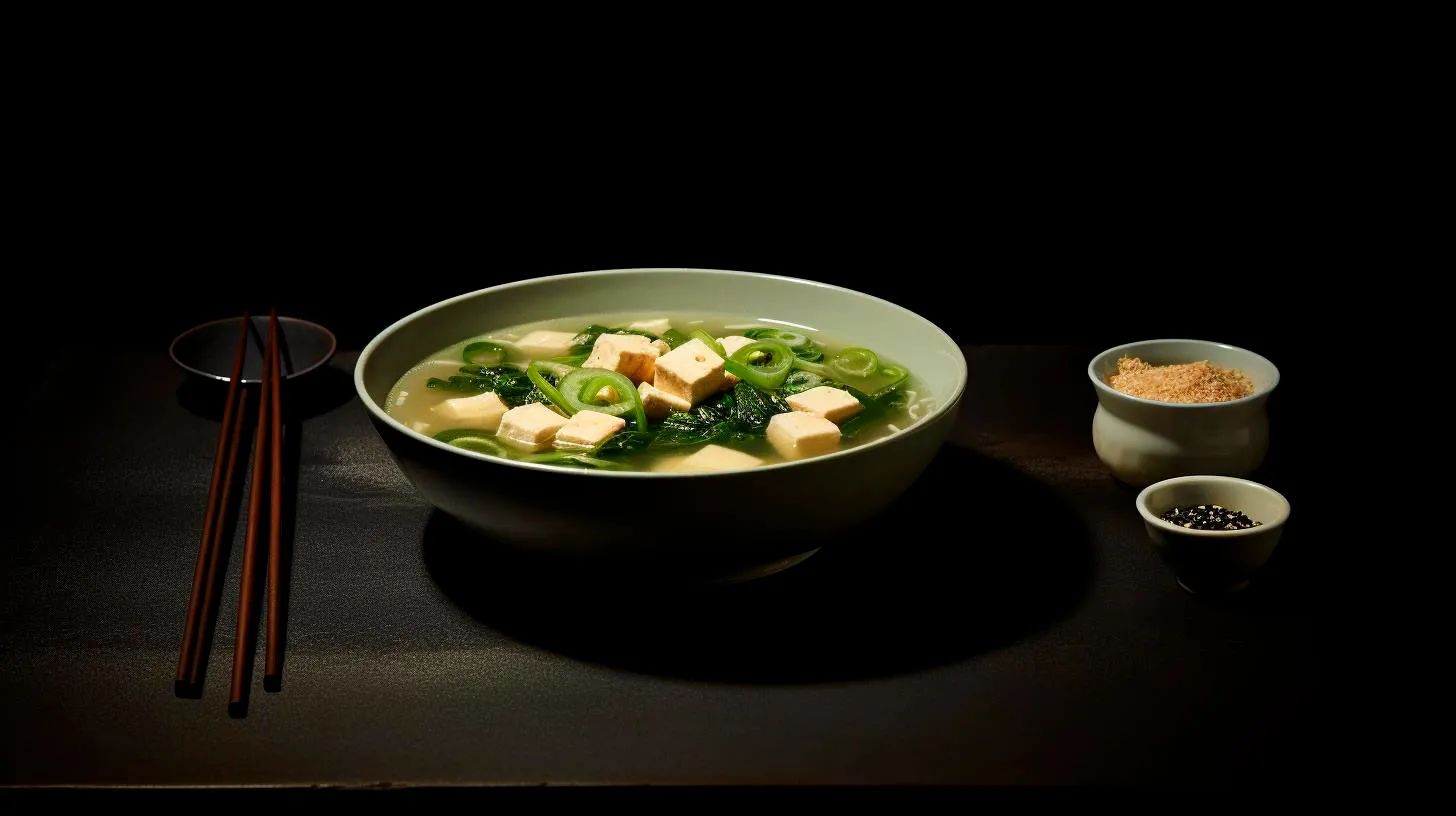Sushi Rice: The Heart and Soul of Delectable Sushi Rolls
The Art of Perfecting Sushi Rice
While sushi rolls encompass a wide range of flavors, textures, and fillings, the true essence lies within the harmonious balance between the vinegary rice and the other ingredients. Mastering the art of sushi rice preparation is crucial for achieving sushi perfection. Here’s a step-by-step guide to crafting impeccable sushi rice:
- Choose the Right Rice: Opt for short-grain rice, such as Japanese sushi rice or Calrose rice, which have a high starch content. These varieties allow the rice grains to stick together without becoming mushy.
- The Rinse Ritual: Rinse the rice thoroughly under cold water to remove excess starch. This step ensures that the cooked rice is fluffy and not overly sticky.
- The Water-to-Rice Proportion: Use a 1:1.25 water-to-rice ratio. This ratio may vary slightly depending on the specific rice variety, so refer to the package instructions for the best results.
- The Cooking Process: Place the rinsed rice and water in a saucepan and bring it to a boil. Reduce the heat to low, cover the pan, and allow it to simmer for around 15 minutes. Finally, let the cooked rice sit covered for an additional 10 minutes to absorb any remaining moisture.
- Vinegar Mixture: While the rice is steaming, prepare the vinegar mixture by combining rice vinegar, sugar, and salt. Gently heat the mixture until the sugar dissolves completely.
- Sushi Rice Assembly: Transfer the cooked rice to a large, shallow bowl. Gradually pour the vinegar mixture over the rice while gently folding it in. Ensure each rice grain is coated with the vinegar mixture for a delightful tangy flavor.
The Savory Characteristics of Sushi Rice
What sets sushi rice apart from other rice varieties is its unique flavor profile and texture. Here are some key characteristics that make sushi rice irresistible:
- Stickiness: Sushi rice possesses just the right amount of stickiness, allowing the rolls to hold their shape while offering a delightful chewiness.
- Sweetness: The subtle sweetness of sushi rice, derived from the sugar in the vinegar mixture, provides a pleasant contrast to the other flavorful ingredients.
- Tanginess: The hint of tanginess from the rice vinegar not only enhances the overall taste but also acts as a natural preservative for the rice.
- Balance: The balance between sweetness, tanginess, and the natural umami flavors of sushi rice creates a harmonious taste experience with every bite.
Benefits of Using High-Quality Sushi Rice
Paying attention to the quality of sushi rice is crucial in elevating your sushi game. Here are some benefits of using high-quality sushi rice:
- Texture: High-quality sushi rice has the perfect texture, allowing it to stick together without becoming overly mushy or dry.
- Appearance: With its pearly-white appearance and glossy sheen, high-quality sushi rice enhances the visual appeal of your sushi rolls.
- Authenticity: Using premium sushi rice ensures an authentic sushi experience, bringing you closer to the traditional flavors enjoyed in Japan.
- Easy Handling: High-quality sushi rice is less likely to clump together, making it easier to handle and shape into perfect rolls.
The Key Takeaways
Sushi rice is the heart and soul of every delectable sushi roll. Whether you are a sushi aficionado or a curious food enthusiast, understanding the nuances of sushi rice is paramount for crafting the perfect sushi experience. Here’s a quick recap of what we’ve explored:
- Master the art of sushi rice preparation, starting from choosing the right rice to achieving the ideal stickiness.
- Sushi rice possesses unique characteristics, including stickiness, sweetness, and tanginess, that make it stand out from other rice varieties.
- Using high-quality sushi rice yields numerous benefits, such as achieving the right texture, enhancing appearance, ensuring authenticity, and facilitating ease of handling.
So, next time you take a bite of a scrumptious sushi roll, savor the magic that sushi rice brings to the table. With a little practice and attention to detail, you can delight your taste buds with your very own homemade sushi creations. Happy sushi-making!
The Rising Popularity of Nori Seaweed: A Nutritious Addition to Your Diet
What is Nori Seaweed?
Nori seaweed, scientifically known as Porphyra, is a type of marine alga that belongs to the red algae family. It mainly grows along the coastlines of Japan, China, and Korea, where it has been consumed for centuries. Traditionally, nori is harvested, washed, pressed, and dried in sheets before being used in various dishes.
The Health Benefits of Nori Seaweed
Nori seaweed is a nutrient powerhouse with numerous health benefits:
- Rich in essential minerals: Nori contains high levels of iodine, iron, calcium, and magnesium, which play vital roles in maintaining overall health.
- A source of vitamins: It is packed with vitamins A, C, and E, which are essential for supporting immune function and promoting healthy skin.
- Abundance of antioxidants: Nori is rich in antioxidants that help neutralize harmful free radicals in the body, reducing the risk of chronic diseases.
- Excellent source of dietary fiber: This marine vegetable is a significant source of fiber, aiding digestion and promoting bowel regularity.
- Heart-healthy properties: Nori seaweed contains omega-3 fatty acids, which are beneficial for cardiovascular health and may help reduce the risk of heart disease.
Culinary Uses of Nori
Nori seaweed is not only nutritious but also incredibly versatile in the culinary world:
- Sushi rolls: Nori is commonly used to wrap sushi rolls, adding a unique umami taste and a satisfying crunch.
- Snack option: Crispy and lightly salted, roasted nori sheets make a delicious and healthy snack on their own.
- Soups and salads: Crumbled or thinly sliced nori can be sprinkled over soups, salads, and noodle dishes, providing a wonderful flavor and texture.
- Seasoning ingredient: Ground nori seaweed can be used as a seasoning to elevate the taste of various dishes, such as roasted vegetables or popcorn.
The Popularity Surge of Nori Seaweed
While traditionally popular in Asian cuisines, nori seaweed has gained global recognition due to its numerous benefits and culinary versatility:
- Health-conscious consumers: As people become more health-conscious, they are actively seeking nutrient-dense and plant-based foods, leading them to explore the benefits of nori seaweed.
- Rise of plant-based diets: With the increasing popularity of plant-based diets and the search for sustainable food sources, nori seaweed offers an excellent alternative to animal-based products.
- Umami explosion: Nori’s unique umami flavor, often described as savory and fulfilling, has captured the taste buds of food lovers worldwide, making it a sought-after ingredient in contemporary cuisines.
- Easy accessibility: With the widespread availability of nori seaweed in supermarkets and online marketplaces, it has become more accessible to individuals looking to experiment with new flavors.
Key Takeaways
Nori seaweed is a nutritious marine vegetable with numerous health benefits. Here are the key takeaways from this article:
- Nori seaweed is rich in essential minerals and vitamins, making it a valuable addition to a healthy diet.
- The antioxidants found in nori help combat free radicals and promote overall well-being.
- Its versatility in culinary applications, from sushi rolls to snacks and seasonings, makes it a favorite among food enthusiasts.
- The surge in the popularity of nori seaweed can be attributed to the growing interest in health-conscious diets, plant-based alternatives, and its unique umami flavor.
- With its increasing accessibility, now is the perfect time to incorporate nori seaweed into your diet and enjoy its nutritional benefits.
So, why not explore the world of nori seaweed and discover delightful, nutrient-packed dishes that will not only tickle your taste buds but also nourish your body?
Condiments and Seasonings – The Key to Elevating Your Culinary Experience
In this blog post, we will explore the various types of condiments and seasonings, their advantages, and how you can elevate your cooking prowess with these flavor-boosting essentials.
The Art of Seasoning
Seasonings are the foundations of any delicious dish. They encompass a wide range of flavors, from herbs and spices to salts and peppers. Seasonings not only enhance taste but also contribute to the overall aroma and visual appeal of the food.
- Spices: Spices are derived from various parts of plants, such as the bark, seeds, or roots. They add depth and complexity to dishes, tantalizing our taste buds. Popular spices include cinnamon, cumin, turmeric, and paprika.
- Herbs: Herbs are the leaves of plants and are often used fresh or dried to add a subtle yet refreshing flavor to dishes. Common herbs include basil, parsley, rosemary, and thyme.
- Salt: Salt is a fundamental seasoning used to enhance flavors and balance other ingredients. It acts as a taste enhancer and helps in bringing out the natural flavors of the food.
- Pepper: Pepper, both black and white, adds a touch of spiciness and a mild heat to dishes. It is often used to season meats and savory preparations.
The Magic of Condiments
Condiments are the secret weapons that elevate any dish from ordinary to extraordinary. These flavorful additions come in various forms and can completely transform the taste profile of your culinary creations.
- Sauces: Sauces are versatile condiments that can be used as a base, a marinade, or a finishing touch. From the tangy and spicy heat of hot sauce to the sweetness of barbecue sauce, they add a burst of flavor to grilled meats, sandwiches, and more.
- Dips and Spreads: Dips and spreads are perfect for entertaining and adding an extra zing to your meals. Whether it’s a classic guacamole, a creamy tzatziki, or a fiery salsa, they enhance the taste and offer a delightful texture to your dishes.
- Pickles and Chutneys: Pickles and chutneys are flavor-packed condiments made from preserved fruits, vegetables, or herbs. They add a tangy, sweet, or spicy element to your meals and are perfect accompaniments to cheeses, meats, and sandwiches.
- Oils and Vinegars: Infused oils and flavored vinegars offer a unique twist to your cooking. From truffle-infused oils to balsamic vinegars, they enhance the taste and aroma of salads, roasted vegetables, and even desserts.
Key Takeaways
By utilizing the wide range of condiments and seasonings available, you can elevate your culinary creations and unlock a world of flavors. Here are some key takeaways to remember:
- Seasonings such as spices, herbs, salt, and pepper add depth and complexity to dishes.
- Condiments like sauces, dips, pickles, and oils can transform the taste profile of your meals and offer versatility.
- Experiment with different combinations of condiments and seasonings to create unique flavor profiles.
- Use high-quality ingredients to ensure the best taste and flavor in your dishes.
- Don’t be afraid to try new condiments and seasonings to spice up your cooking.
Remember, with a dash of creativity and the right combination of condiments and seasonings, you can take your culinary experience to new heights. So, embrace the world of flavors and let condiments and seasonings be your culinary companions on your delicious journey!
Sashimi-grade Fish: A Gourmet Delight for Seafood Enthusiasts
What Makes Fish Sashimi-grade?
Sashimi-grade fish refers to the highest quality seafood that is safe to consume raw, specifically for dishes like sashimi or sushi. To achieve this designation, the fish should meet the following criteria:
- Freshness: Sashimi-grade fish must be exceptionally fresh with minimal time between catching and serving. Fresher fish translates to better texture, taste, and appearance.
- Handling and storage: The utmost care must be taken during handling and storage to maintain the fish’s freshness and prevent the growth of harmful bacteria.
- Purity: Sashimi-grade fish must be free from parasites, contaminants, and toxins to ensure its safety for raw consumption.
- Texture and appearance: The fish should have a firm texture and vibrant color, indicating its high quality and freshness.
Advantages of Sashimi-grade Fish
Sashimi-grade fish offers several advantages over its counterparts, making it a preferred choice for seafood enthusiasts:
- Uncompromised taste: Sashimi-grade fish boasts unparalleled fresh flavors, allowing you to experience the natural essence of the seafood without any overpowering fishiness.
- Texture: The firm texture of sashimi-grade fish ensures a delightful melt-in-your-mouth experience, adding to the overall enjoyment of each bite.
- Versatility: Sashimi-grade fish can be enjoyed in various raw preparations, including sashimi, sushi, ceviche, and tartare, providing endless culinary possibilities.
- Nutritional value: Raw fish is a great source of lean protein, essential omega-3 fatty acids, vitamins, and minerals, offering a nutritious dining option for health-conscious individuals.
Key Takeaways for Seafood Enthusiasts
For seafood enthusiasts seeking to enjoy sashimi-grade fish, here are some key takeaways to keep in mind:
- Trustworthy suppliers: Purchase sashimi-grade fish from reputable sources, such as trusted fish markets or suppliers specializing in sushi-grade seafood.
- Ask for certifications: Ensure that the fish you buy has been properly handled, stored, and certified for raw consumption to guarantee its quality and safety.
- Proper storage and handling: If you plan to prepare sashimi at home, educate yourself on the best practices for storing and handling raw fish to maintain its freshness and minimize any health risks.
- Experiment with flavors: Explore different types of sashimi-grade fish to discover your favorites. Tuna, salmon, yellowtail, and snapper are popular choices with unique flavors and textures.
- Accompaniments and presentation: Enhance your sashimi experience with traditional accompaniments like wasabi, soy sauce, pickled ginger, and decorative garnishes to elevate both the taste and visual appeal.
To sum up, sashimi-grade fish offers seafood enthusiasts an exquisite dining experience that combines freshness, flavor, and sophistication. By understanding what makes fish sashimi-grade, appreciating its advantages, and embracing the key takeaways, you can embark on a culinary journey of raw seafood delicacies like no other.



